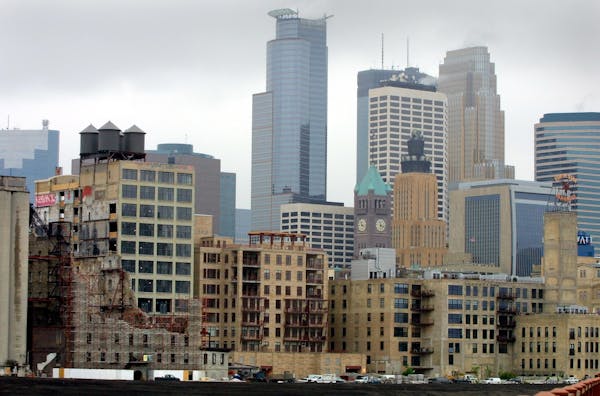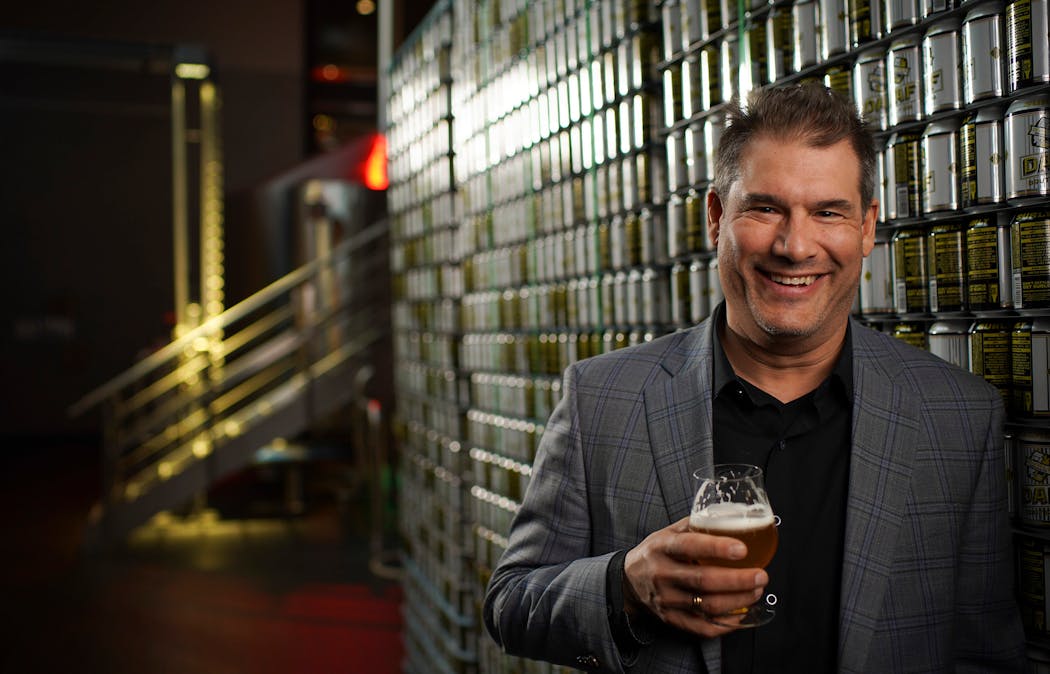How many Minn. breweries existed before the microbrewery boom?
Listen and subscribe to our podcast: Via Apple Podcasts | Spotify | Stitcher
In 2011, a little Twin Cities brewery with a big buzz made a giant gamble at the Minnesota Legislature. Even the bettors didn't know how much they would change the state's beer game.
"Almost everyone who knew anything about the legislature, including editors at the Star Tribune, said we didn't have a chance," Surly Brewing Co. founder Omar Ansari recalled of House bill HF703.
Better known in Minnesota craft beer lore as "the Surly bill," the law became the big-bang moment for Minnesota's great brewery explosion of the 2010s. It finally allowed breweries to sell their beer for on-site consumption, effectively green-lighting taprooms.
That's right: Before Siri could point you to a brewery five blocks away, the only way to actually drink beer at a Minnesota brewery was to take a guided tour and hope for free handouts at the end – which a surprising number of beer lovers actually did.
The Surly bill is at the heart of reader Ron Liss' question for our Curious Minnesota community-reporting series: "How many breweries existed in Minnesota before the current popularity of microbreweries today?"
A Chicago area resident, Liss got hopped up on our state's brewery scene while visiting his son at the University of Minnesota.
"It's pretty different from Chicago," he noted. "I like that there's a good mix of big, mid-sized and more neighborhood breweries."
And yes, there are a lot of them now. The number of breweries in Minnesota nearly increased tenfold in the 2010s.
The state had about 20 active breweries or brew pubs in the year preceding the 2011 legislation.
Those included the second-oldest independent brewery in America (Schells in New Ulm), the local forebearer of the modern craft-brew era (Summit in St. Paul), some Minneapolis brewpubs (Town Hall, Herkimer) and a few other hip, young Twin Cities breweries besides Surly (Lift Bridge and Fulton).
As of December, Minnesota boasted 196 breweries or brew pubs, according to the Minnesota Craft Brewers Guild, stretching from Forbidden Barrel down in Worthington to Boathouse Brewpub up in Ely. About half of them are in the Twin Cities metro area.
"Be careful what you wish for," quipped Ansari, who watched competitors such as Indeed and Bauhaus open popular taprooms soon after the 2011 law passed. Surly had to wait out the three-year construction of its $30 million "destination brewery" near the U of M campus in Minneapolis.
"I knew it would pay off, because I knew how much demand there was in the market for quality beer," Ansari said, crediting the so-called "Surly Nation" for helping get the 2011 legislation passed. "Our customers called and spoke up for it. That made a world of difference."
Evan Sallee, president of the Minnesota Craft Brewers Guild, remembered there being about 60 breweries when he co-founded Fair State Brewing Co-op in northeast Minneapolis in 2014.
"I honestly thought we were maybe too late to the game," he recalled with a laugh.
Sallee said "it was extremely hard and expensive" to open breweries before the Surly bill legalized taprooms. But he also credited the local boom to the nationwide rise in craft brewers over the last decade. In fact, Minnesota still hasn't cracked the top 10 states with the most breweries per capita.
"There still could be more changes to the laws to help us move much closer to the top."
There are actually less Minnesota breweries per capita now than there were in 1875. That's when the number in the state reached its initial peak of 123 breweries, according to Doug Hoverson, author of "Land of Amber Waters: The History of Brewing in Minnesota."
Not counting the prohibition era of the 1930s — when the number officially went to zero (yeah right!) — the low point for Minnesota breweries was not that long ago. Per Hoverson's data, only four operated in the state from 1976 until Summit's opening in 1986: Schells, Hamms, Schmidt and Cold Spring.
Of course, after nine boom years, Minnesota's brewery scene is suddenly in flux. The COVID-19 quarantine has shut down taprooms statewide for two months and counting. Brewers are also losing valuable sales in shuttered restaurants and bars.
So far, no brewery has closed due to the virus, but Sallee said, "At least half of them have told us they won't last if it drags on much longer."
Both Sallee and Ansari cited concern for some of Minnesota's youngest breweries, many of which popped up in recent years in Greater Minnesota. "I've seen a lot of those taprooms really help revitalize a lot of smaller towns and become meeting places for both tourists and locals there," Ansari said.
Still, Sallee offered a bright spot.
"Before the coronavirus, I still had not seen a tipping point," he said. "There's really a strong brewing community in the state now that — with the right support — could continue and last a long time."
---
If you'd like to submit a Curious Minnesota question, fill out the form below:
Read more Curious Minnesota stories:
Why is Minnesota more liberal than its neighboring states?
When you flush a toilet in the Twin Cities, where does everything go?
Was Minnesota home to nuclear missiles during the Cold War?
How did Minnesota become known as the 'Land of 10,000 Lakes?
St. Paul vs. Minneapolis: Why can't the Twin Cities get along?
Does Minnesota really have the worst winters in the country?
Should Minnesota be considered part of the Midwest?
Why is it so much harder for U students to graduate debt free compared with the 1960s?
How did Minnesota become one of the most racially inequitable states?
Why is Uptown south of downtown in Minneapolis?
Why can't Minnesotans figure out how to zipper merge?




